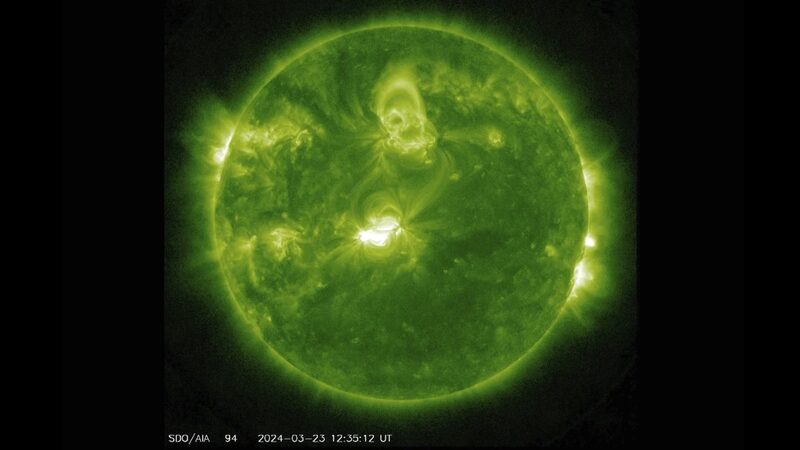Get ready to look up and be dazzled! 🌟 Space weather forecasters have issued a geomagnetic storm watch through Monday, thanks to an outburst of plasma from a recent solar flare. This means we might get to see some breathtaking auroras lighting up the night sky! 🎆
But don't worry, there's no need for alarm. The U.S. National Oceanic and Atmospheric Administration's (NOAA) Space Weather Prediction Center in Boulder, Colorado, assures the public that there's no cause for concern. 🙌
The storm could interfere with high-frequency radio transmissions. This might affect aircraft communicating with distant control towers, but most commercial planes have satellite transmissions as a backup. ✈️📡 \"It's nothing we can't handle,\" says Jonathan Lash, a forecaster at the center.
Satellite operators might face some challenges tracking their spacecraft, and power grids could experience minor induced currents. But again, nothing serious is expected. 🔌🛰️
For all you night owls and stargazers at higher latitudes, this is your chance! \"If you have clear skies at night, this would be a great opportunity to see the skies light up,\" Lash adds. So grab a blanket, some friends, and enjoy the cosmic show! 🌠🌙
Did you know? Every 11 years, the sun's magnetic field flips, swapping its north and south poles. 🔄 This cycle brings changes in solar activity, and we're currently near the most active phase, known as the solar maximum. 🌞
During these times, geomagnetic storms like this can hit Earth a few times a year. During the solar minimum, years might pass between such storms. So this is a pretty special event! 💫
Remember back in December when the biggest solar flare in years disrupted radio communications? Well, space is full of surprises! 🚀
Stay curious, stay excited, and keep your eyes on the skies! ✨
Reference(s):
cgtn.com




